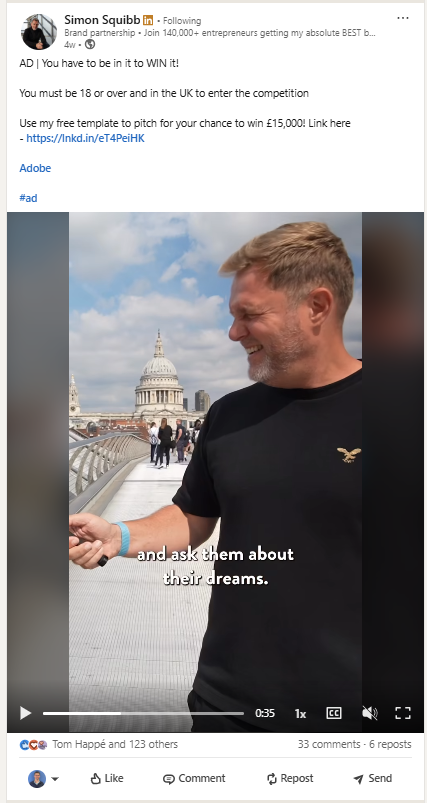
From B2C to B2B, How LinkedIn Became the New Influencer Playground
Nina Domingo
A decade ago the word influencer meant one thing. Instagram models, YouTube creators or TikTok stars promote beauty brands, fitness supplements, sneakers or the latest energy drink. It was all B2C, built on relatability at scale. The formula was simple. Attention drives sales.
Today something very different is happening. The playbook that once defined consumer marketing has moved into the B2B world. The new stage is LinkedIn, where thought leaders, executives and niche experts have become the voices companies turn to for visibility, credibility and trust. 87% of B2B buyers say they prefer content from trusted industry influencers over branded sales messages
This is not a passing fad. It is a shift in how business marketing works.
The Rise of the LinkedIn Influencer
LinkedIn influencers do not look like traditional social media stars. They are not chasing perfectly curated photos or millions of followers. They are professionals with authority in their space. SaaS founders, consultants, venture capitalists and ex-corporate leaders who attract attention by sharing ideas, stories and opinions.
Their power comes from the depth of their networks. A single post from the right LinkedIn creator does more than gather likes. It creates conversations among decision makers. In B2B, one conversation can be more valuable than thousands of consumer clicks.

Why B2B Was Bound to Catch Up
This evolution always felt inevitable.
Consumer brands learned years ago that people trust people more than companies. A product recommendation from someone relatable carried more weight than a glossy advertisement. The same logic applies in B2B. The stakes are higher but the principle is identical.
The audience is smaller, but each impression is worth far more. A single thoughtful post can influence a major contract, partnership or hiring decision.
From Personal Branding to Collaboration
It started naturally. Professionals shared expertise on LinkedIn to build personal brands. Some gained traction and built large followings. Companies noticed these people were commanding more engagement than their corporate pages.
That is when collaboration began.
- SaaS companies asking thought leaders to highlight their tools
- Consulting firms paying creators to co host webinars or panels
- Influencers weaving product mentions into broader posts about industry challenges
This is not the glossy sponsored ad we are used to seeing on Instagram. It is subtler and often more effective. When a respected voice drops a brand into a thoughtful discussion it does not feel like marketing. It feels like validation.
Sponsored Thought Leadership
Thought leadership has quietly become a new form of advertising.
Instead of buying banner ads or paying for cold email campaigns, brands are buying authenticity through association. A single sponsored post sparks discussion, comments and shares that live far longer than any display ad.
The difference between consumer and business influencer marketing is what happens next. In B2C an influencer can trigger a purchase. In B2B the same post can spark credibility, reputation and even an entire sales cycle.
Why This Works
There are a few reasons LinkedIn influence feels so powerful in the B2B world.
- People trust people more than polished campaigns
- The audiences are smaller but each person is a high value connection
- The conversation is the content. Comments, debates and follow ups are part of the influence itself
At its heart this is the same principle that powered consumer influencer marketing. Human voices beat corporate ones every time. B2B influencer campaigns have seen a 520% return on investment (ROI)
Where It Is Heading
This shift is still new, but you can already see where it is going.
- Executives are becoming influencers. In some cases their personal profiles drive more engagement than their company pages
- Agencies will formalize partnerships between LinkedIn influencers and brands in the same way they did for Instagram creators
- Video and casual behind the scenes content will grow as audiences look for authenticity
- Campaigns will integrate directly into sales pipelines instead of sitting only in the marketing department
The playbook is still being written. What is clear is that influencer marketing in B2B is no longer an experiment. It is a channel.
My Take
This shift is one of the most underrated changes in modern marketing.
For years B2B marketing felt sterile. White papers, gated PDFs and scripted webinars. LinkedIn influencers are proving you can build credibility through conversation rather than campaigns. Sometimes a single authentic post achieves more than a quarter million dollar ad budget.
It is also changing how professionals think about their own voices. Personal branding is no longer just career insurance. For some it is a new revenue stream. For others it is more powerful than the companies they represent.
Conclusion
This is not really about consumer versus business marketing. It is about something much simpler. People trust people.
The platforms are different. The audiences are smaller. The stakes are higher. But the principle has not changed. Authentic voices move markets.
The difference now is that instead of selling sneakers or supplements, influencers are shaping multi million dollar software deals and rewriting how industries talk to one another.
LinkedIn is no longer just a place to post your résumé. It has become the new influencer playground. And if companies have not noticed yet, they soon will.


